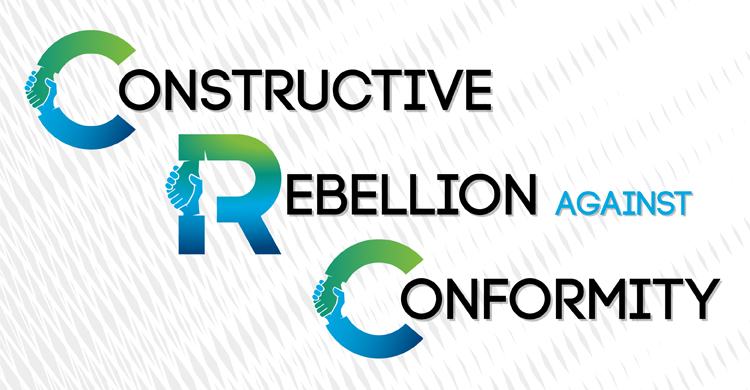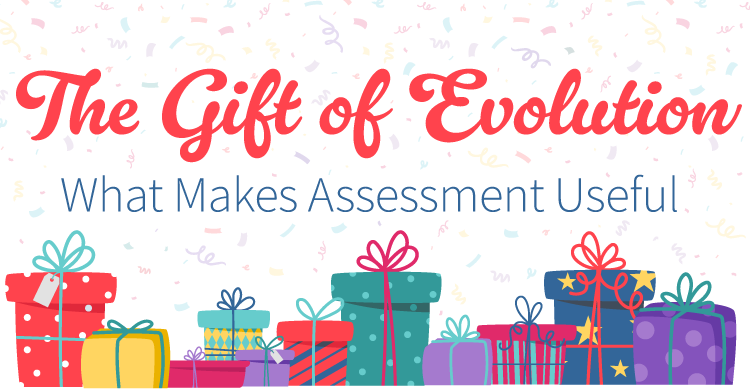This entry is the 13th in a blog series called Pandemic Response and Educational Practices (PREP), which aims to highlight and further the important work educators are doing amid the worldwide COVID-19 crisis.
Based on Ready for Anything
Throughout our lives, society pushes us to conform.
Schools teach conformity, starting in preschool, initially under the guise of safety. As students matriculate through the K–12 system, they encounter a barrage of rules that implore them to do the right thing. Students are taught to listen quietly, raise their hand to be recognized, play nice, not talk back to the teacher, put their cell phones away, and so on.
School rules exist as a means to protect young people from the damage that other young people might inflict. But the problem with conformity in education is that children aren’t born standardized (Robinson, 2015). Well-meaning educators spend so much time containing and constraining students that by the time they enter adulthood, conformity is so ingrained they have no choice but to embrace it.
Exposing fault lines
During the social justice movement sweeping the nation, school districts have joined corporations to issue public statements, saying they support Black Lives Matter and will do more in the fight for racial equity in education.
Taking a hard look at how students of color are really treated in schools—not how we think they’re treated—is essential to live up to this promise. In the best-selling book How to Be an Antiracist, author Ibram Kendri reminds us that the best way to address the achievement gap is by paying attention to the opportunity gap.
Movements expose fault lines that existed well before the movement began. But when the protests stop, what will prevent us from settling back into our old ways? Historians note that when people don’t plan well for the aftermath of a tumultuous time, the aftermath tends not to be all that good.
Whether Black Lives Matter will be a transformative moment for education depends on our ability to lay bare the vast inequities that exist in our nation’s schools. Taking a stand against educational inequity must come without fear of standing alone.
Fitting in
Despite claims to the contrary, organizations put tremendous pressure on their employees to fit in. Workplace conformity takes on many forms, such as:
- Modeling the behavior of those in similar roles
- Preserving the status quo
- Acquiescing to group decisions
- Routinely agreeing with the opinions of higher-ups
People feel accepted and believe their views are more credible when these views are shared by colleagues. But without the insight to know when to push back, teachers and administrators will struggle to remain relevant. Toys R Us, MySpace, and Blockbuster all had winning formulas at one time too, and look where they are now.
For educators, the predisposition to fit in starts early. New teachers are quickly indoctrinated into their building’s culture by peers. Novices long to feel part of the team, making it difficult to resist social pressure or be on the wrong side of a disagreement.
As time passes, it’s safer to allow the principal to resolve major standoffs than to openly confront a colleague or share an opposing point of view. Although conflict-resolution training is a staple in schools, it’s aimed at resolving conflicts among students rather than the adults who serve them. While many teachers rely on authoritarian methods to handle classroom conflicts—leading to a host of issues for students of color—they are conflict-averse when it comes to addressing tension with a colleague or parent.
In pursuit of rebel talent
Not all forms of conformity are bad. Education codes and board policies help ensure laws are not broken and offer protections to students and employees. The principles of constructive conformity are also underpinned by district norms. But in order to evolve, schools have to strike a balance between episodic noncompliance and perpetual conformity.
Many successful corporations embrace admiration for nonconformity. Author and Harvard professor Francesca Gino explains how workplace rebels buck convention through subtle shifts. For example, instead of asking, “What should we do?”, a nonconforming boss will pose the question, “What could we do?” This one-word difference invites myriad perspectives into the conversation.
Sadly, schools often sabotage their own best intentions by espousing out-of-the-box thinking on one hand while pushing in-the-box practices on the other. Blending conformity with nonconformity takes yin and yang. We don’t want a lack of conformity to give teachers the impression they’re free agents. Conversely, rigid structures limit a team’s ability to come up with new ideas or find better solutions to problems.
Good trouble
The late congressman and civil rights leader John Lewis taught the nation that when we see something that’s not right, unjust, unfair, we must make some noise and get into “good trouble.” Seeking out courageous dissenters enables teams to pursue necessary trouble. In turn, this liberates us to tackle old problems in new ways.
In schools, we do a lot of talking, but what are we actually saying? If students are expected to advance society and solve local and global problems, then our education system has to be less stifling. Nonconforming teachers shouldn’t be viewed as anarchists or malcontents. Instead, they should be looked upon as practical change agents who want to cut through red tape to bring next practices to bear.
In the ever-changing narrative of schooling, educators are being asked to do things that aren’t particularly comfortable or popular. How might constructive rebellion move conversations forward in your building? What nonjudgmental language will address longstanding practices that inadvertently hold black and brown students back? To build momentum, we must eat the conformity elephant one bite at a time. Small measures can produce big shifts.
Breaking rules
| Table 1: Constructive vs. Destructive Rebellion | |
| Constructive Rebels | Destructive Rebels |
| Create | Complain |
| Ask questions | Make assertions |
| Display optimism | Display pessimism |
| Generate energy | Zap energy |
| Pinpoint causes | Point fingers |
| Focus on the mission | Focus on self |
| Attract | Alienate |
| Show passion | Show anger |
| Source: Lovely (2020). Ready for Anything | |
There is a right way and wrong way to push back against conformity. For example, teachers have a long list of standards to cover during COVID school closures. Yet, virtual learning plans require a high level of self-direction. Is your remote learning program giving teachers the chance to explore, deviate, and ideate? Simplicity is key.
As we launch into this never-before-traveled school year, let’s break the rules that should be broken. Constructive rebels are skeptics, not cynics. As Table 1 shows, the distinctions come through our actions.
References:
Gino, F. (2016). Let your workers rebel. Harvard Business Review. Available at https://www.hbs.edu/faculty/Publication%20Files/Let%20your%20workers%20rebel_b87d0da9-de68-45be-a026-22dee862e6e4.pdf.
Kendi, I. (2019). How to be an antiracist. New York: One World.
Lovely, S. (2020). Ready for anything: Four touchstones for future-focused learning. Bloomington, Indiana: Solution Tree Press.
Robinson, K. (2015). Creative schools: The grassroots revolution that’s transforming education. New York: Penguin Publishing.
[author_bio id=”2107″]







